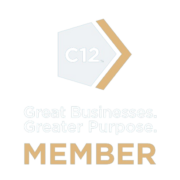This is why strong passwords and multiple identity checks are important to all businesses.
In the normal course of business, the average worker may require half a dozen or more passwords to gain access to Windows, Wi-Fi, email, enterprise software, and other applications. Most people use multiple passwords and change them often, but some reuse passwords or stay logged in to accounts to simplify their lives. In fact, 25% of computer users admit to using the same password for all their accounts, both at home and at work.
But what this also simplifies is a hacker’s ability to gain access to your systems. Passwords are the keys to your business, and as hacking technology becomes more advanced, your business security weakens the more you rely on a single password. Fortunately, there’s a simple solution.
What Is Multifactor Authentication?
Multifactor authentication (MFA) is a security protocol that requires a user to provide two or more pieces of information called authentication factors to verify their identity when trying to access a system. MFA protocols call for a combination of three general factors:
- Something the user knows, such as usernames and passwords, a passphrase, or PIN.
- Something the user has, which could be a physical security token, a one-time password (OTP) token, a key fob, an employee access card, or a phone SIM card.
- Something the user is. This refers to biometric identification such as retinal scans, fingerprints, or voice authentication.
Multifactor authentication must include at least two of these factors. A common use of MFA is when someone needs to access cash from their bank account using an ATM. After they swipe their card (something the user has), they enter a PIN (something the user knows).
How To Apply Multifactor Authentication to Small Businesses
One of the great things about MFA is how customizable it is to your business needs. Different forms of authentication can be used to control different levels of access.
Here are some common ways businesses introduce MFA into their workflows.
- SMS Verification – This is an authentication method that sends a one-time-use code to a cell phone. It’s a convenient MFA procedure, but since cellphones can be hacked, it’s not as effective as it once was.
- App-generated codes – Your phone can also contain an authenticator app that will notify you when there’s an attempt to sign in to your account, and you can easily approve or deny the request. The drawback is that employees need to use their personal devices to access their work accounts.
- Hardware tokens – Using a key fob or another physical token, this method dynamically generates a code for the user. An issue with key fobs is they can be lost or damaged and need to be deactivated and replaced.
Why Multifactor Authentication Is Important
By requiring a second or third form of identification, MFA greatly decreases the probability that an attacker will gain access to your sensitive company data. Even if a bad actor gets a password and a username, it’s still challenging for them to get the elements they need to gain access.
Some businesses may be slow to embrace MFA because they believe it hinders productivity. They want to avoid employees getting confused and locking themselves out of applications because they forget passwords and login procedures. But in the grand scheme of things, the opposite is true. Employees need corporate applications, documents, and back-office systems, and MFA systems are designed to allow them quick and safe access. MFA also reduces the workload for IT departments as they field fewer tedious password reset requests.
One thing to consider is that MFA is mandated by most compliance regulations. And the sooner a business implements an MFA policy, the quicker employees can normalize it. The goals of compliance should always be about preserving the integrity and security of your systems and not just doing the minimum to get by.
Security should be a priority to your business. Authentication systems reduce fraud and build more secure relationships with customers and vendors. Identity theft is expensive and disruptive, and unsecure businesses are a prime target for hackers looking for personal information. MFA provides an additional layer of security for the business, the customer, and all transactions between them.
How To Create an Effective Password
One thing you can do right now to tighten network security is teach your employees how to create a strong password they can remember.
Password strength is related to how much computing power is required to crack it. Long, complex passwords that require multiple types of characters (uppercase and lowercase letters, numbers, symbols) exponentially increase the time it takes to crack. When a hacker tries to guess every combination using automation, this is called a brute force attack. With today’s technology, that can be very effective. In 2012, a hacker had the ability to guess 350 billion passwords per second and could crack any eight-character Windows password containing uppercase and lowercase letters, numbers, and symbols in less than six hours.
The Elements of a Strong Password:
- 12 characters or longer
- Use all character types on a keyboard
- Never use common words
- Avoid password patterns
- Avoid using the same password in multiple places
- Don’t store passwords on a spreadsheet
Relate passwords to things that are easy to remember, like a sport, a pet, or a hobby. While Louie1234 is a very weak password, L0u!e#Dawg** meets the minimum requirements of a strong password. Approaching your passwords in such a way increases security without impacting user experience.
SBT Partners Is Your Full-Service Cyber Security Resource
Strong passwords and multifactor authentication are crucial elements of any cybersecurity strategy. We understand the importance of MFA and recommend any business that deploys Microsoft 365 or has any critical business applications with outside access use MFA to secure their systems. Through Microsoft Authenticator, Google Authenticator, and DUO, we can implement MFA processes for any business function you need.
Call us today for a free cyber security consultation. We can assess your current environment, identify your major vulnerabilities, and come up with an MFA solution that suits you and secures your networks.



